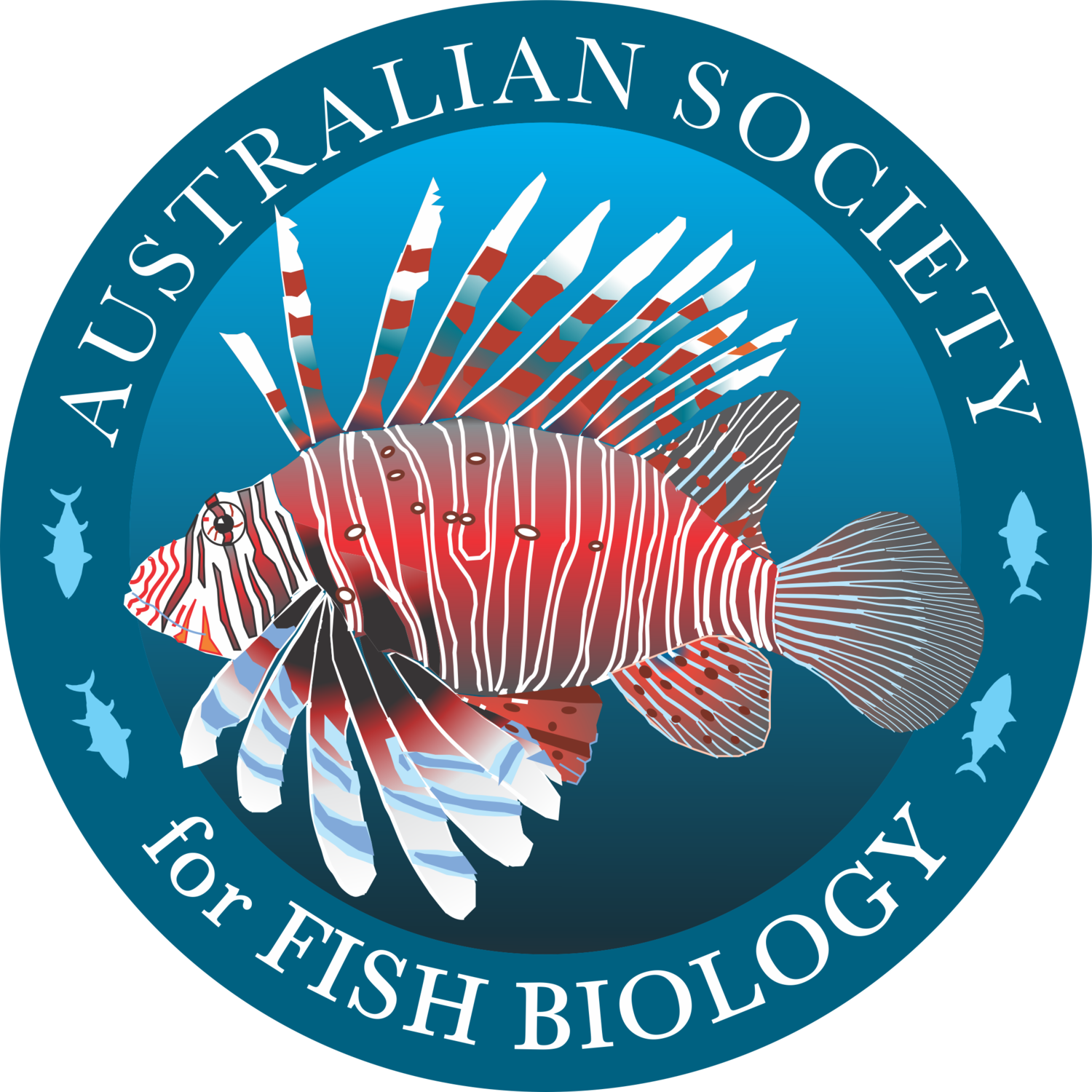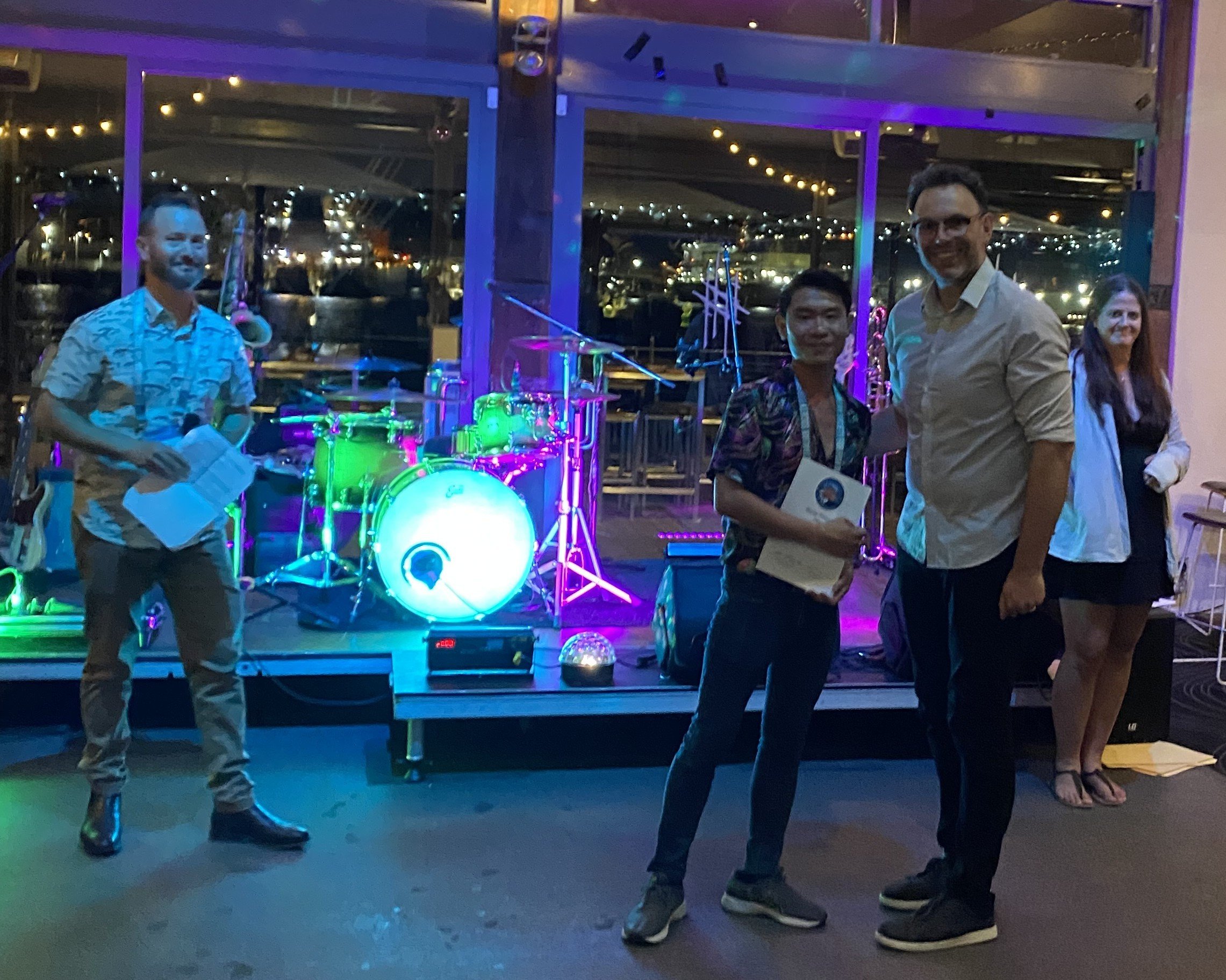On the line with… Yoel Jeremy
Yoel Jeremy is a fish behaviourist and PhD candidate at the University of New South Wales. He also won last year’s Barry Jonassen Award, which ASFB provides to support students researching freshwater fish and fisheries. We spoke to Yoel about his work on fishways and how the award has helped his research.
Yoel, as an introduction, can you tell us about the project you're currently working on?
I'm working with my supervisors Iain Suthers, Stefan Felder, Richard Kingsford and fellow ASFB member Jasmin Martino to assist civil engineers from UNSW in building a new type of fishway, called a siphon fishway. My project is focused on applying fish behavioural insights, with the ultimate objective of finding ways to best facilitate the movement of native fishes.
And for anyone who doesn’t know, what is a fishway?
Essentially, when we build instream barriers – be it dams, weirs, or even roads here in Australia – fish species that need to move for different reasons, to forage for food or to breed, find they just can’t.
And so you need to build a purpose-built passage around these barriers. It’s mainly for fish, but of course, if you have turtles, or platypus, or yabbies, or other aquatic fauna in that body of water then they might also use a fishway.
And how does this new siphon fishway work? I’m sure it’s complicated, but give us the basics!
Yoel attends a fishway trial at Manly Creek with supervisor Iain Suthers (L) and the engineer who designed the fishway valve control, Clive Holden.
So, a siphon flows due to vertical pressure gradient. That means the water does not flow just because it’s passively spilling from an upstream water body like most other fishway designs.
You generate a state of reduced pressure at the crest of a siphon, then water goes up to that low pressure environment driven by atmospheric pressure, before flowing back down due to gravitational pull. That way we can have the entrance to a fishway at depth, and it can keep flowing regardless of the changes in the depth of the water upstream. Which is a benefit in Australia because river water level can significantly drop during the dry seasons.
Why is this research so important for the freshwater fishes of Australia?
I could talk on and on about how 74% of Australian native fishes are endemic, or 30% of them are already classified as threatened… But to go a bit broader, in Australia – and specifically in the freshwater realm – the issues that we're facing are unique to Australia. There are two main issues with respect to instream barriers.
The first, as I mentioned already, is that our rivers are naturally variable in terms of discharge. During the summer seasons you can have very dry, barely flowing rivers. During the wet season there is flooding. But we are compounding on that by putting in these barriers, which effectively fragment river volume.
And the other thing, there is still so much that we don't know about Australian freshwater fishes and how they migrate. It's not like salmon, which we know a lot about. And that maybe makes sense because Australian freshwater fisheries are not as economically significant. But can we need to go beyond just considering economic importance. A lot of our freshwater fishes and systems are culturally significant. They feature heavily in the Dreamtime stories of our First Nations people. When we’re trying to conserve this freshwater realm, we’re trying to consider these broader, different aspects as well.
What does your daily work look like right now?
I’m looking at what we have to do before we design the fishway and deploy them in the field. It’s the really nitty-gritty fine scale behavioural analyses, and we need a controlled environment for that. So my work is largely based in the lab.
I'm currently planning an experiment with the endangered silver perch and golden perch to see if they can negotiate this hypobaric pressure gradient that occurs in a siphon. The Tube Fishway Project is our umbrella project, and hopefully my contributions will help the other team members determine how to best approach their field trials.
Yoel accepts the Barry Jonassen Award at the ASFB 2024 conference in Newcastle.
Last year you won the ASFB’s Barry Jonassen Award, which supports student research into freshwater fish and fisheries. How did that feel?
It's still very surreal for me. I came from a very marine background, so I didn't expect to win. My research at that point was also still a pilot, but I knew it could have a big impact moving forward.
And how has the financial support from the award helped your research since?
That is actually pretty straightforward. The thing with fishway research is that it is very tech-heavy. We rely on so many different types of equipment, to measure flow and pressure, for example, and also things like cameras for behavioural observations of the fish. So the more you invest in the technology, the easier it is for you to collect your data.
The award allowed me to invest in a really good camera. It works in low light. It has multi-channel features and auto-record motion detection. All the fancy stuff that can help with behavioural observation.
The other tech that's really important is the pump supplying the flow that has a digital flow control. This gives me a better idea of how much flow is actually going into the system. That's really important because we need to control things that we are not interested in seeing. For example, if I'm focused on assessing the pressure I don't want the flow to also impact with the fish behaviour.
How did you get into fish biology? And if you started in marine research, how did you get into freshwater fishways?
I've always been a fish head. I've been keeping fish since I was four. When I go to a high school reunion or something like that, the others are like, "Yeah, now I'm an accountant." And people are like, "But you were so bad at maths back in school." But for me, it's like, "Yeah, now I'm a fish scientist." And they'll be like, "Yeah, duh."
I got hooked on behavioral science straight away when I was doing my undergrad. I did a research project on the behaviour of hermit crabs. Then I came to Australia and originally thought maybe I can do more behavioral work in the marine realm. But then this fishway project came up. They needed a behaviourist's help, because they can put as many fishways out there as they want, but if the fish are not using it then what's the point? I signed up, and here I am.
Yoel presents his research at the ASFB 2024 conference in Newcastle.
What do you enjoy most about being a member of ASFB?
It's really good to be in a community that shares a common passion. I think people join ASFB not always just because they like science. Yes, they are scientifically driven, but also you see people who share passion for art, for example. As an artist myself I really enjoy being able to have a chat about it.
And, of course, ASFB provides lots of awards, especially for students. PhD students are probably the scientists most in need of financial support from organisations like ASFB. So student awards like the Barry Jonassen Award are really helpful.
Beyond the work you're doing now, where do you hope your fish biology research might take you in the future?
A job in fisheries management or a postdoc position would be awesome. But here’s a crazy answer: I’d love to work in an aquarium, as a consultant or husbandry expert or research scientist. If I could have my own public aquarium, that would be the ultimate dream! The concept behind public aquaria can often be more for entertainment. But if we can have one that is focused more on research, education, and also conservation, then it can contribute a lot to science as well.




